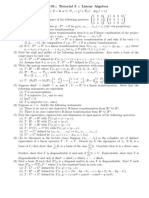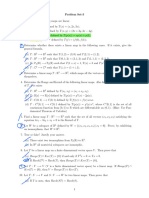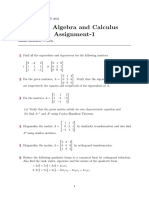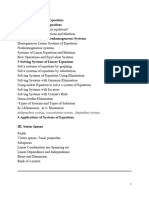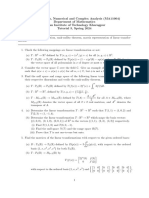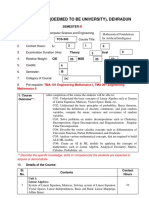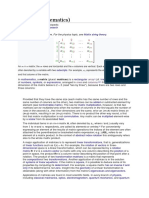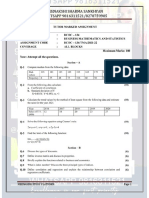0% found this document useful (0 votes)
18 views4 pagesLinear Transformations Assignment
The document covers various problems related to linear transformations, linear functionals, rank, and nullity in linear algebra. It includes exercises on determining whether specific mappings are linear transformations, finding rank and nullity of given transformations, and exploring matrix representations of transformations. Additionally, it discusses properties of linear maps and provides examples related to operators and vector spaces.
Uploaded by
rohitkar723Copyright
© © All Rights Reserved
We take content rights seriously. If you suspect this is your content, claim it here.
Available Formats
Download as PDF, TXT or read online on Scribd
0% found this document useful (0 votes)
18 views4 pagesLinear Transformations Assignment
The document covers various problems related to linear transformations, linear functionals, rank, and nullity in linear algebra. It includes exercises on determining whether specific mappings are linear transformations, finding rank and nullity of given transformations, and exploring matrix representations of transformations. Additionally, it discusses properties of linear maps and provides examples related to operators and vector spaces.
Uploaded by
rohitkar723Copyright
© © All Rights Reserved
We take content rights seriously. If you suspect this is your content, claim it here.
Available Formats
Download as PDF, TXT or read online on Scribd
/ 4









